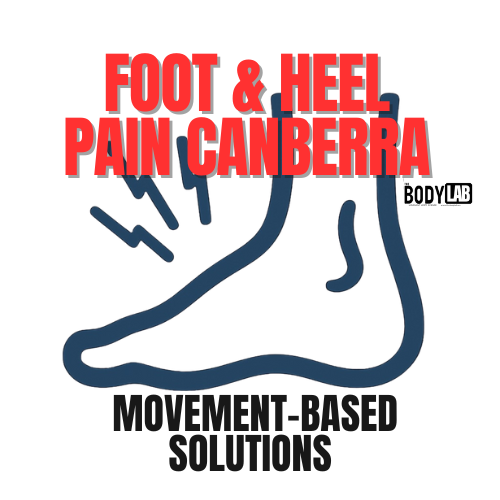Plantar Fasciitis: Unraveling the Foot Pain Puzzle
At the core of foot mechanics lies the plantar aponeurosis – a dynamic fibrous tissue network within the sole, which is vital to foot function and mobility. Misunderstood as just “fascia,” it plays a pivotal role in supporting arches and driving propulsion. But what happens when this system breaks down?
Plantar fasciitis, a common cause of foot pain, is more than inflammation—it’s a biomechanical tendinopathy caused by overloading. With each step, improper mechanics or excessive pressure can lead to micro-tears in the fascia, resulting in the sharp heel pain many people experience, especially during activities like standing or walking.
Understanding Plantar Fasciitis: The Bigger Picture
Plantar fasciitis isn’t isolated to just foot mechanics. Imbalances in the triceps surae (calf muscles) or hip extensor engagement can exacerbate the issue, putting undue strain on the foot. Footwear choices, especially restrictive ones, can further hinder foot function. To tackle plantar fasciitis effectively, a more holistic approach is needed—addressing the entire kinetic chain from the feet to the hips.
Symptoms of Plantar Fasciitis
Symptoms of plantar fasciitis may vary, depending on the severity and duration of the condition. It is important to recognise the various manifestations of foot pain in order to better understand its underlying causes and seek appropriate treatment.
Here are some common symptoms associated with plantar fasciitis:
Heel & Arch Discomfort: Pain can vary from a dull ache to sharp, intense pain in the heel or arch.
Burning Sensations: Some report a burning or stabbing sensation in the affected area, particularly as you get out of bed
Activity-Related Pain: Prolonged standing or walking worsens symptoms.
Stiffness & Tenderness: Limited foot flexibility often accompanies plantar fasciitis but generally get better during the day.
Clicking Sensations: Some feel a clicking or popping in the foot while moving.
Causes of Plantar Fasciitis
Plantar Fasciitis is a common condition characterised by inflammation or irritation of the plantar fascia, a thick band of tissue running along the underside of the foot. While the exact cause of this inflammation remains unclear, several factors have been identified as potential contributors to its development:
• Repeated Strain: Running, jumping, or extended periods of standing can stress the fascia.
• Foot Structure Abnormalities: Flat feet or high arches alter weight distribution and increase strain.
• Age-Related Degeneration: As we age, tissue elasticity decreases, leading to increased susceptibility to injury.
• Obesity: Excess body weight places additional pressure on the plantar fascia, aggravating
It is important to emphasise that plantar fasciitis can potentially occur in individuals of all ages, activity levels, or body weights. It is not exclusive to athletes or individuals with a specific demographic profile. It is advisable for anyone experiencing symptoms of plantar fasciitis to seek professional medical advice from a healthcare practitioner, either through in-person consultation or online platforms, to determine the underlying cause and establish an appropriate treatment plan.
Risk Factors for Plantar Fasciitis
While plantar fasciitis can affect anyone, there are certain factors that can contribute to an increased risk of developing this condition. These factors include:
Physical Activity: Engaging in high-impact activities such as running, jumping, or dancing can put a significant strain on the plantar fascia, increasing the chances of developing plantar fasciitis.
Prolonged Standing or Walking: Spending long periods standing or walking, particularly on hard surfaces, can contribute to the development of plantar fasciitis. The continuous pressure on the plantar fascia can lead to inflammation and discomfort.
Foot Structure: Individuals with flat feet or high arches are at a higher risk of developing plantar fasciitis. The biomechanical abnormalities associated with these foot types can increase the strain on the plantar fascia and lead to the development of the condition.
Age: The risk of developing plantar fasciitis tends to increase with age. As we get older, the elasticity and strength of the plantar fascia diminish, making it more susceptible to injury.
Obesity or Sudden Weight Gain: Excess body weight puts added pressure on the feet, which can strain the plantar fascia and lead to inflammation and pain. People who are obese or experience sudden weight gain are more prone to developing plantar fasciitis.
If you have one or more of these risk factors, it is crucial to take proactive steps to prevent the development of plantar fasciitis. This may involve wearing appropriate footwear that provides adequate support and cushioning, taking breaks during physically demanding activities to give your feet a rest, and maintaining a healthy weight to reduce the strain on your feet.
If you are experiencing symptoms of plantar fasciitis, it is recommended to consult with a healthcare professional. They can help determine the underlying cause of your symptoms and develop an appropriate treatment plan tailored to your specific needs. At The Body Lab, we can assist with diagnosis and treatment through our in person or virtual consultations. We are dedicated to providing comprehensive care to individuals suffering from plantar fasciitis and helping them find relief from their symptoms.
Treatment Options
The Importance of an Individualised Treatment Plan for Plantar Fasciitis
A personalized approach is key. At The Body Lab, we focus on uncovering the root causes of pain, not just treating symptoms. Here’s what to expect from a comprehensive treatment plan:
1. Rest & Activity Modification: Reducing excessive stress on the plantar fascia helps promote healing.
2. Targeted Exercises: Strengthening the posterior leg muscles and improving foot mechanics.
3. Footwear Analysis: We’ll review your current footwear and suggest adjustments, but our goal is to restore function rather than rely on orthotics or inserts.
4. Gait & Movement Assessments: By analyzing your gait and movement, we address systemic imbalances, ensuring long-term foot health.
Take charge of your health and let us guide you towards a more comfortable and active lifestyle. Together, we can develop an individualized treatment plan that suits your needs, ensuring you receive the best care possible. You can also review our free exercises to help with plantar fasciitis.





















